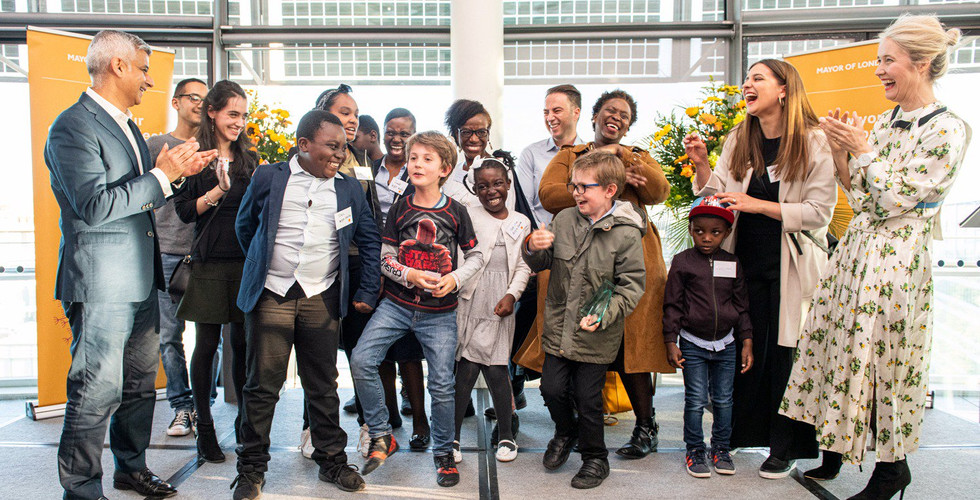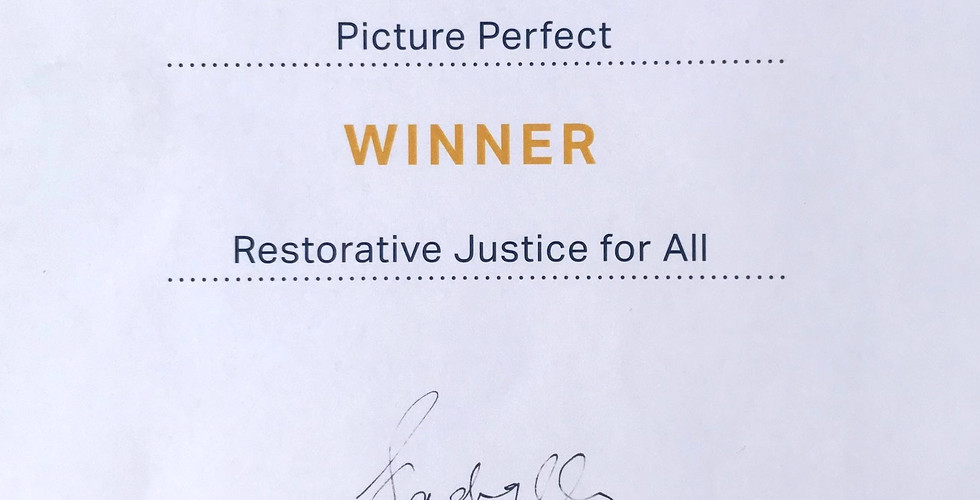A message of hope: Children-led restorative justice art
- Laura De-Nuzzo
- Jun 1, 2019
- 3 min read
Restorative justice is centered around the concept of power sharing and communication. It is usually used as an alternative form of justice when crimes are committed. However, the true power of restorative justice can be found elsewhere; indeed, it can be used as a preventive tool building resilience and community cohesion amongst the young. As an intern for Restorative Justice for All, this is what I've learned by participating in the Cultural and Art for Unity Project.
I am particularly proud as the project won the Perfect Picture Award of the London Mayor's Culture Seeds and was the runner up in 3 additional categories: Community Creator, For Young People, By Young People. But mostly, I am proud of the children who truly put restorative justice into action.
Dialogue in an era of fear
Prejudices and fear of differences are becoming a more and more widespread phenomena in today globalized society. This is especially true in the wake of the rise of nationalism in many European countries with Italy, Austria and the United Kingdom being the most straightforward examples of this. In the latter countries, diversity is seen as a threat to national security and identity: “after 9/11, identity becomes a matter of security with “the “otherness”” [...] and diversity being pictured as a “threat””[2]. Homogeneity, accordingly, becomes the rule. This new rule, however, is discriminatory in nature: “presupposing an ethnically homogenous ‘west’ in which ethnic diversity, immigration and multiculturalism are a ‘problem’ to be fixed, it automatically targets communities already suffering from discrimination as part of the ‘problem’”[3].
Against this background, crucial is the enhancement of integration and community cohesion to prevent the spread of hate crimes and prevent radicalization. The main question, therefore, becomes: what is a community and when is it cohesive? As a young student living abroad, I think a community cohesion implies the construction of a “safe space” in which people are not judged based on their origin, race or religion, a space, as Antonio Guterres would say, in which “differences are a richness and not a threat”[4].
But if fear is the norm and inclusiveness the exception, perceptions need to be changed in order to build a cohesive community. Dialogue is crucial in this shift: “By talking to each other and by sharing power in whatever form this is given (parents, teachers, rich, nationality etc”[5]attitudes can evolve.
Culture and Art for Unity: Dialogue through Arts
Dialogue to break down differences, thus enhancing community cohesion, is the main objective of the Culture and Art for Unity. The project, indeed, created a “safe space” for children through art. The latter can, actually, be a powerful instrument of expression and communication. According to UNESCO, art can be used as “as a platform for self-expression and a way to provide a better understanding of [different] issues”[6].
Accordingly, workshops with local children have been held throughout the year with environment as the main theme. Children, through the use of digital arts, have expressed their feelings and thoughts on pollution, recycling and climate change. Plastic fishes, recycled lamps, 3D maks and a robot, created during the workshops, have been subsequently exposed in a final exhibition. The art-pieces, the workshops and the exhibition were not, however, the end of the project itself; they were just a mean to achieve and create something bigger: trust.
Children, with the power of their enthusiasm, used art to connect to each other, to speak freely. “Doing this makes me feel amazing; to have space in which you can freely paint, it just feels amazing” says Tabitha, one of the participants to the project. And if during the workshops the kids established a dialogue among them, the exhibition was the occasion to extend the exchange to family and the whole community.
To download their art and read more, see The story of Restorative Justice Art through children's eyes
--------
Laura De-Nuzzo is an intern at Restorative Justice for All. To join us click here
[2]Kofman, E. (2005). Citizenship, Migration and the Reassertion of National Identity. Citizenship Studies. 9(5), 453-467, DOI: 10.1080/13621020500301221
[3]“Framing ethnic diversity as a 'threat' will normalise far-right hate, say academics”. Open Democracy. Retrieved May 31, 2019, from https://www.opendemocracy.net/en/opendemocracyuk/framing-ethnic-diversity-debate-as-about-threat-legitimises-hat-0/
[4]United Nations (UN). (2018, September 28). Diversity is Richness, Not a Threat’, Secretary-General tells United Nations Alliance of Civilizations Group of Friends Ministerial Meeting. [Press Release]. Retrieved April 13, 2019, from https://www.un.org/press/en/2018/sgsm19263.doc.htm
[6]United Nation Education, Scientific and Cultural Organization. (UNESCO). Achieving Intercultural Dialogue Through Arts and Culture. Retrieved May 31, 2019, from https://en.unesco.org/fellowships/keizo-obuchi/summary-research-carried-out/achieving-intercultural-dialogue-through-arts-and-culture















Comments